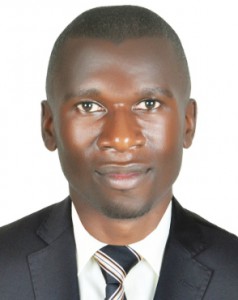This paper focuses on the role of private actors in the direct provision of health care in Uganda, through provision of health related goods and services such as research, treatments, human resources, and healthcare financing. It maintains that, while the health sector system of Uganda is predominantly covered by the private health care in its current state, this has mostly benefited the rich and middle class citizenry with higher disposable incomes who can afford the high charges on treatment. The paper also stresses that much as the private profit motivated forces hike fees on health care, this can also be worsened and perpetuated by the public entities
 By Michael Ssemakula
By Michael Ssemakula
Health Rights Researcher & Advocate
Human Rights Research Documentation Center (HURIC) & PHM-Network, Uganda
Private Players in the Growth Paradox of Health Service Provision and Advancement in Uganda
When the people hear the datum of private health provision through pure private or public private synergies, they contextualize it as a neoliberal monetized service from the industrial medical complex phenomena of laissez-faire and capitalistic forces of economic systems.
This paper focuses on the role of private actors in the direct provision of health care, through provision of health related goods and services such as research, treatments, human resources, and healthcare financing.
Private sector’s engagement in the delivery of health care encircles a complex variety of activities done by non-governmental actors. These include national, multinational corporations, non-governmental organizations, private institutions including charitable bodies, and other non- and for-profit entities, and private individuals, such as general practitioners, professionals and consultants. Their professional undertakings in health are indispensable which include direct delivery of health care, advisory services, the management of health facilities, manufacturing and supply of healthcare merchandises such as pharmaceutical products, medicines and rehabilitation services like psychiatric services, and the financing of health care products and services. These roles and activities may also be carried out within a publicly managed and funded health care systems, though countries have embraced the use of Private Public Partnerships (PPP) to guarantee availability, accessibility and aquireability of quality health services.
It is significant to recognize and address private actors’ participation and contribution to the health sector vis-à-vis the global goal of achieving Universal Health Coverage (UHC) to strike a balance in division of roles performed by the two sectors. Government health entities are famously known for provision of mainly essential healthcare services, while their private counterparts providing health insurance services, highly specialized and expensive research services.
Case-in-line, the Production Possibility Frontier (PPF) health financing curves, of different countries especially in the Low Income Countries (LIC) show most of the times governments of these countries trade off research for Primary Health Care (PHC) due to the scarcity of health financing resources. According to the research by Melvin (2005), this indicates that more resources are earmarked and devoted towards PHC and other diseases treatment than health research and health insurance services on the PPF health financing curves during resource earmarking and appropriation. With such under-provision of resources to support significant health research, innovations and inventions, a void is left to be filled by the private players. For example, in Uganda research is mainly done by the private firms or charity foundations. In the recent past, research on an epidemic neglected tropical disease, the Nodding syndrome, in Uganda was funded by the Canada-based Raymond Chang Foundation. Nodding syndrome has killed and distressed lives of countless children in northern Uganda for a significant number of years (Kakumirizi, 2018). The government did not have the capacity to finance this hardcore research exercise, though it was in position to afford the air tickets of the seven Ugandan scientists who were sent to partake in this important science study in Canada.
Besides the research, in Uganda the health insurance policies are mainly provided by the private sector. The government mainly uses social security schemes for its populaces like employment old compensation scheme of the National Social Security Fund (NSSF) for retired workers in private sector, and pensions and gratuities for the retired workers in public sector. However, those who are self-employed especially those in informal sector are out of this equation catered for by the government. The government has not yet considered the national health insurance scheme because it is considered to be expensive to the vast majority of the people and the government itself in terms of periodical premiums to be paid.
The outlook of the health sector in Uganda has been directed by the forces of price mechanism through the private health service providers due to the high degree of inelastic demand for the availability and accessibility of good quality health-related services. When Uganda embraced the divestiture and liberalization drive through the economic reform program of 1987 after the civil war, the majority of sectors’ operations and management systems were restructured and rationalized with the health sector inclusive. The landscape of the health sector system of Uganda changed to a mixed public and private service delivery system though it is predominantly covered by the private health care in its current state (Centre, 2015). Health in Uganda has slightly experienced a blighter note improvement through provision of better quality health care.
However, this has mostly benefited the rich and middle class citizenry with higher disposable incomes who can afford the high charges on treatment. Both the public and private sector in health now fall in the same equation of premiums charged on patients: example-in-view, when the Uganda government on September 13th, 2018 completed the construction of Mulago Specialized Women and Neonatal Hospital (MSWNH) in Kampala which started on June 9th, 2015 by the Arab contractors Osman Ahmed Osman and Company funded through a loan the government of Uganda obtained from the Islamic Development Bank. This was one of the paths to improve reproductive and maternal health, decongest Mulago National Referral Hospital and enhance treatment of women with difficult reproductive health complications to reduce referrals abroad for certain specialized treatment in reproductive and neonatal health category. Unfortunately, upon the completion of the facility, the Ministry of Health came up with a list of unaffordable fees on services that this new facility was to offer. This has become an impossible dream to many vulnerable women in Uganda to access this facility and resort to cheaper and affordable private health facilities that can offer good maternal health services according to reports (Salim, 2018).
This shows that much as the private profit motivated forces hike fees on health care, this can also be worsened and perpetuated by the public entities. Therefore in order to improve health care accessibility for all in both private and public sectors without exposing the citizenry to detestable financial hardships, proper health governance should be put into consideration through placing the niche on the following:
–Reinforcing the work of the advisory boards, According to, the Public Health Act, 281, provides for the establishment of advisory board and states “For the purpose of this Act, the Minister shall establish a body to be known as the Advisory Board of Health comprising the chief medical officer, or his or her authorized representative, as chairperson and such other members as the Minister may see fit to appoint, including at least three non-officials resident in Uganda who shall be appointed for such period as the Minister may determine.” Regulating the private sector in health protects the citizenry against exploitation from the private individuals through price mechanism system. When their work is properly guided and operation boundary is well demarcated, more positive social outcomes towards health are realized. Therefore the line should be drawn between what the private and public sector should provide, such that essential health services especially in the Primary Health Care are not left solely for the private sector.
–Rebuilding the policy space, capacities and systems that support equitable health access for all. The health and wellbeing of the citizenry is mainly dependent on the policies and systems in place and the capacities they have to sustainably maintain the health of nationals. Health as a natural fundamental right and principle, should not be capitulated fully to private sector to insure. It’s the mandate of the governments to shoulder the lead role in health promotion before the capitalist drivers, to guarantee equitable health access and a healthy populace. This affirms the hypothesis that higher productivity, efficiency and creation of a country’s wealth is dependent on its Human Development Index (HDI) through equal accessibility to good health, good education and good standard of living for the population, which is achieved through good policy space and systems.
–Strengthening transparency in public health systems and processes in national health programming, budget process information, procurement processes and progress of the health service provision between public and private providers. This is still a challenge in Uganda: case-in-view, the government through the pressure of civil society organizations drafted the National Health Insurance Bill 2012, to increase the number of people on the insurance services because Uganda is the only country in East Africa that has not yet implemented the national health insurance for its citizenry. Countries like Kenya, Tanzania and Rwanda have now benefited from the introduction of Insurance schemes (Dennis, 2012). They have meaningfully upturned their Maternal, Newborn and HIV/AIDS national Indices by covering the poor and the most vulnerable indigent groups such as women living in the remote rural and poor peri-urban settings. However, due to the gaps in the information, very few people know about the progress of the aforementioned relevant Bill in Uganda. It has not been brought yet on the floor of parliament, policy makers are still grappling with the decision of who should provide the service between the public and private sector, or a partnership of the two, and such information is still limited to the public domain. The National Health Insurance implementation failure is partly connected to the political climate whereby the government of Uganda scrapped off the user fees in 2001 in public health centres. Ugandans have been gullibly deluded to have access to free-of-cost and affordable quality healthcare services in public facilities. However, the citizenry have continuously spent out of their pocket and owing to indirect involved costs such as transportation expenditures, supplementary fees to pay for the drugs and other pharmaceutical supplies from private merchants in pharmacies, clinics and private health facilities.
–Strengthening accountability. This implies ensuring that there is an oversight over the work of private entities, and that regular reviews are conducted and shown on the results of health investments by institutions and private independent entities’ participation in diverse spheres of health.
References
Centre, E. P. (2015). Liberalisation and the growth paradox in Uganda. Kampala: eprc.
Dennis, O. (2012). Introducing the National Health Insurance Scheme is a key Solution to Inequity, Access and Quality of Health Services in Uganda. Kampala: The Action Group for Health, Human Rights and HIV/AIDS.
Kakumirizi, M. (2018, 9 26). Nodding breakthrough: Why government must finance research. Kampala, Central, Uganda.
Melvin, W. B. (2005). Economics. Newyork: Houghton Mifflin Company.
Salim, S. (2018). How much it will cost you to get treatment at Mulago Specialized Women Hospital. Kampala: Pulselive.








